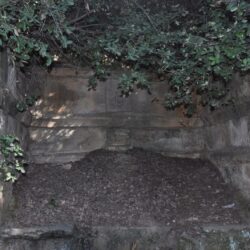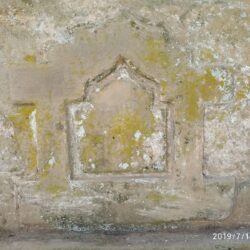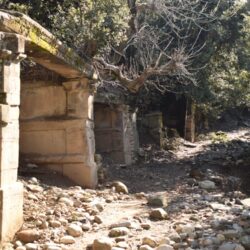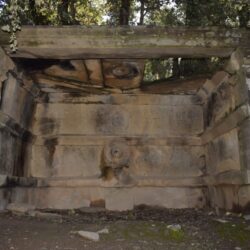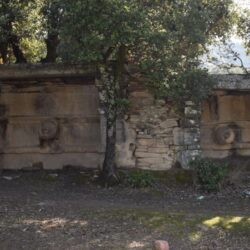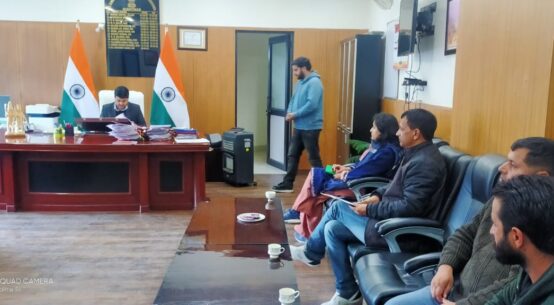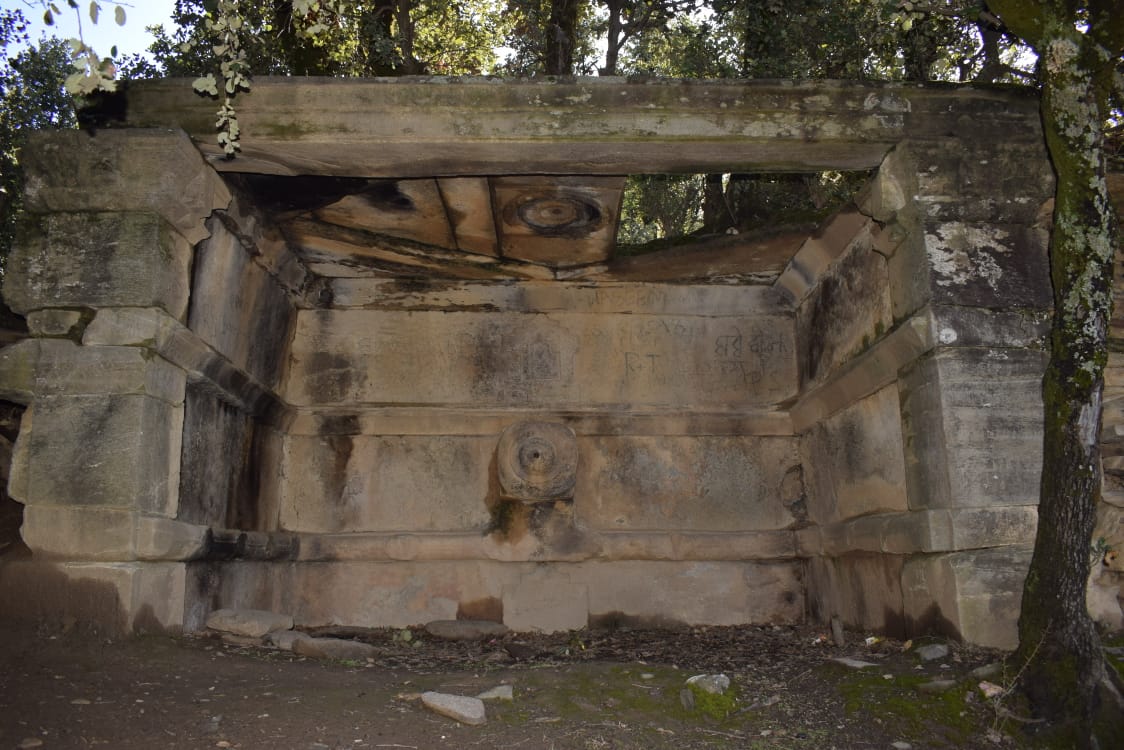
BINDRABAN ARCHAEOLOGICAL SITE: PRESERVING THE CULTURAL LEGACY OF KISHTWAR
Authored By: Anil Kumar Bhagat
Kishtwar’s past is shrouded in mystery, making it extremely difficult to estimate the exact age of its history. The region of kishtwar is nestled amidst massive mountains and was previously covered in thick forest, poses significant challenges in tracing the history of human settlement, particularly the arrival of the first inhabitants. It is believed by historians that kishtwar possessed a distinct script of its own, which has unfortunately disappeared with the advent of time.
In order to explore our rich heritage and gain insights into our ancestor’s lives, we must examine the tangible objects and structures they built and left behind. Their creations are still visible today, but regrettably, they are in a state of disrepair. Some remnants of their creations survive, either damaged by time or deliberately suppressed by humans for personal gain. Some artifacts are even discovered buried beneath the earth. It is vital that we protect and preserve these relics, leaving a legacy for future generations.
In kishtwar, there exists a site, roughly 4-5 kilometers away from the district headquarters, presently referred to as Bindraban (Vrindavan).This location is home of many human constructed monuments, which, through observation, permit us to estimate their age and the tool and technologies that were likely used in their creation andwe know about those things as much as a partridge knows about the moon.
Bindraban is a historical place and religious hub for Hindu community situated North-West to kishtwar. A historical temple of Lord Rama and Hanuman is erected there time since immemorial. There are twelve Baolies constructed in ancient times date of which is not fixed. It is general belief of the locals that these Baolies are constructed by the Pandavas during the time of their period of exile. To construct these Baolies was not possible for a common man because there were no machines and modern technology at that time and to lift the huge boulders without machines man needs a huge body and good muscular power.
There are total eighteen (18) Baolies at Bindraban, almost all in pity condition. Ten Baolies are facing towards the west and other eight (08) Baolies are facing towards the North-East.
- Ten (10) Baolies at Bindraban can be found between the coordinates of 33⁰21’08”N 75⁰44’28”E to 33⁰21’11”N 75⁰44’25”E.
- Four (04) Baolies can be found at coordinates of 33⁰21’12”N 75⁰44’23”E.
- Three (03) Baolies can be found at coordinates of 33⁰21’14”N 75⁰44’24”E.
- Traces of one (01) Bavari can be found at coordinates of 33⁰21’15”N 75⁰44’23”E.
The architecture and design of these stone structures are remarkably similar and the stones used in their construction were quarried from nearby sites. The walls of these structures boast exquisite carvings and paintings, including images of horses, animals, and carvings of Brahmanical tantrums. The second Bavari at the coordinate of 33⁰21’08”N 75⁰44’28” in the row has a human image carved in the meditating position. Maximum Baolies have horse images carved on their walls which lead us to a conclusion that horse was sacred animal for peoples at that time. The designs of these Baolies have some patterns at equidistance of one foot. This means that they have knowledge of measurement or have any instrument which they used for the measurement. There noans has process of sedimentation, they were so designed that when water comes to the noan, before it there is a little bowl place where the sediments gets deposits at the bottom of the noan and the fresh and pure water flows through its mouth.
Dimensions of the Baolies found at Bindraban all in Feet.
| S.NO. | LENGTH | BREADTH | HEIGHT | COORDINATES |
| 1. | 11.00 | 11.00 | 05.07 | 33⁰21’12”N 75⁰44’23”E. |
| 2. | 14.06 | 08.02 | 08.00 | 33⁰21’12”N 75⁰44’23”E. |
| 3. | 12.03 | 05.01 | 03.10 | 33⁰21’12”N 75⁰44’23”E. |
| 4. | 17.00 | 10.00 | 08.02 | 33⁰21’11”N 75⁰44’26”E. |
| 5. | 10.00 | 05.04 | 06.10 | 33⁰21’11”N 75⁰44’26”E. |
| 6. | 11.06 | 04.06 | 06.06 | 33⁰21’11”N 75⁰44’26”E. |
| 7. | 14.00 | 06.08 | 07.09 | 33⁰21’11”N 75⁰44’26”E. |
| 8. | 11.00 | 05.00 | 07.00 | 33⁰21’11”N 75⁰44’26”E. |
| 9. | 09.00 | 02.00 | 05.00 | 33⁰21’11”N 75⁰44’26”E. |
| 10. | 11.00 | 05.10 | 08.02 | 33⁰21’11”N 75⁰44’26”E. |
| 11. | 18.00 | 07.00 | 08.00 | 33⁰21’11”N 75⁰44’26”E. |
| 12. | 17.00 | 08.00 | 09.05 | 33⁰21’11”N 75⁰44’26”E. |
Six Baolies are not in condition to be got measured, but can easily be detected. The vestiges of those Baolies have scattered there and some parts of these Baolies have removed from there while some boulders used in those Baolies have now used by the locals for the fencing of their fields.
- One Bavari is at the coordinate of 33⁰21’12”N 75⁰44’23”E.
- One Bavari is at the coordinate of 33⁰21’15”N 75⁰44’23”E.
- One Bavari is at the coordinate of 33⁰21’08”N 75⁰44’28”E.
- Three Baolies are at the coordinate of 33⁰21’14”N 75⁰44’24”E.
Dimension of the Noans of the Baolies found at Bindraban all in feet.
| S.NO. | LENGTH | BREADTH | HEIGHT | HEIGHT FROM GROUND | NUMBER OF NOANS |
| 1. | 01.10 | 01.06 | 01.04 | 01.05 | 01 |
| 2. | 02.00 | 01.09 | 01.06 | 02.00 | 01 |
| 3 | 02.00 | 01.11 | 01.06 | 01.00 | 01 |
| 4 | 02.00 | 02.00 | 01.03 | 01.05 | 02 |
| 5 | 01.00 | 01.00 | 01.00 | 01.00 | 01 |
| 6 | —– | —– | —– | —– | —– |
| 7 | —– | —– | —– | —– | —– |
| 8 | —– | —– | —– | —– | —– |
| 9 | 01.04 | 01.04 | 01.00 | 01.00 | 01 |
| 10 | 02.00 | 02.02 | 01.08 | 03.00 | 01 |
| 11 | 02.00 | 01.05 | 01.00 | 03.00 | 01 |
| 12 | 01.05 | 01.05 | 01.05 | 01.00 | 01 |
Such ancient stone structures Baolies (Step wells) are scattered across various sites in kishtwar plateau like Telmoche, Arese, Hatta, Bun Kuleed, Nagini, Bonpanyar, Inderpanyar, Marpanyar, Inderpanyar, Kundali, Chabe, Hunjale, Sangrambhatta, Hudri, Hargadi and Bimarnag. Similar Baolies are found outside of Kishtwar Plateau, like Kuntwara, Nagseni, Paddar, Saroor, Palmar, Sarthal, Marwah, Drubeel, Morne, and Mulchitar etc. which nearly resembles to each other. Maximum of them are found in pity condition. Some of them are still in working condition, some are in hibernation and some are totally in dead condition. In local language these stone structures are called ‘Nag’ and the stone from where the water comes out are called ‘Noan’.
It is general belief in kishtwar that these stone structures were built by the Pandavas, the historical characters of Mahabharata during their period of exile of fourteen years (13 years of banishment and one year of anonymity). If calculated, then their foundation date goes back to 3052 century B.C. to 3065 century B.C. Prof. K. Srinivasa Raghavan in his book “The Date of the Mahabharata War and The Kali Yugadhi” fixes the date of the Mahabharata war, on Friday Margasira month, Sukla Ekadashi Thithi, Krittika Nakshatra 22nd November 3067 B.C. at 06:30 A.M. and had written the Date of Birth of Lord Krishna as Friday, 27 July, 3112 B.C. and Date of Birth of Yudhishara as Tuesday, 31 August, 3114. According to this theory and the calculation of years it can be established that the age of the stone structures will be nearly 5100 years.
These Baolies in Kishtwar accept the Baolies at Bindraban are accompanied with some Chinar trees and a pious and scared tree for the peoples of Kishtwar called ‘Barun’ in local language. This Braun tree is also called ‘Dharam” and these treeshave never been pruned and its wood has never been utilized. The builders of these stone structures had ample knowledge of geology, hydrology, and architecture. It cannot be denied that the Pandavas did not come here. To support this, an incident is described in the Mahabharata, in which it is told that the Pandva while wandering during their exile period, they reached to a country called Sindhu Desh (Sindhu Desh includes Jammu and Kashmir with some north-east parts of Pakistan). It was the country of their Brother-in-law Jaidratha (husband of Dushala, sister of Durdhona), here Jaidratha tried to abduct Dropadi (wife of Pandavas), but was saved by the Bhima and Arjuna.
Bindraban is the polluted form of the word Vrindavan which resembles with the word Vrindavan, a place in Uttar Pradesh which was place of Lord Krishana mentioned in the Epic Mahabharata. This is not only the name of a place which is related to Lord Krishana but the name Keshwan is polluted form of Keshaw Van means forest of Lord Krishana. The name of the village Thakarie is also polluted form of Thakur ji, Thakur ji is another name of Lord Krishana. There is a forest above the Panditgam which is still called Krishnun Van, means forest of Lord Krishana.
We thought that our ancestors were primitive and we are living in the most advance and civilized society, but out of the past we find many megaliths still erected in very good condition. Did they build these for any purpose or they want leave any clue for us to know their civilization, culture and technology. Off course they did, and built many structure in this Chenab valley and build in such style that these structure should remain for years. How primitive must we suppose those peoples were? They used huge blocks of stones designed in cubical and cuboidal shapes and fitted together without any mortar. Maximum of these structures were interlocked in jigsaw fashion. These interlocked structures resist the earthquake damage and do not collapse like todays structures.
I, humbly request to the local administration of district Kishtwar to take immediate action to protect and revitalize these ancient monuments, which are an integral part of our cultural heritage. I also urge the local inhabitants to participate in safeguard of these ancient monuments and share the heritage of their ancestors with the next generation. The preservation of these ancient structures is crucial, as they provide a window into our ancestors civilization, culture, and technology. Their ingenuity and skill, evident in the construction of these monuments defy our assumptions about the primitiveness of our ancestors.
Authored by: ANIL KUMAR BHAGAT
Mobile: 7051350159
Email: anilk11111982@gmail.com
Disclaimer: This article presents the author’s personal research and interpretation of historical events. www.mykishtwar.com provides this platform for the dissemination of information and diverse perspectives. The accuracy, completeness, and validity of any statements made within this article are solely the responsibility of the author. The content of this article is the sole responsibility of the author. www.mykishtwar.com does not assume any liability for the information presented. The author’s views and opinions do not necessarily represent those of www.mykishtwar.com. Readers are encouraged to conduct their own research and verify the information presented.
